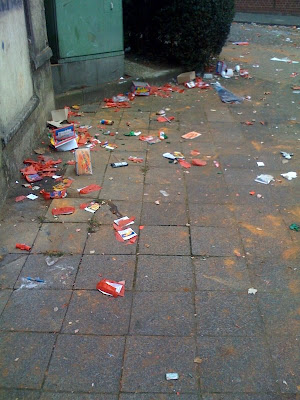
Sometime while I was in college, I heard the design doctrine of Form following Function. I didn't take it as a precept that designers should follow, but rather as a Truth about the world: that form WOULD follow function, even in cases where bad designers didn't insure that that was the case. If you can imagine, for example, a bottle opener with the outward appearance of half a pound of sliced Virginia ham; my question would be, can it in fact open a bottle? If so, then it must have an opening with the proper dimensions to grip the bottle cap. It must have the structure of a simple second class lever. These attributes might be disguised, but can't be hidden completely if the tool is actually going to be effective in opening a bottle. If these attributes are missing, it might just be the makings of a good sandwich. What follows from this belief is really pretty profound and has shaped my worldview in fundamental ways. In the Art World for example, many artists believe that they can control the meaning of their work after they have made it. They feel that they can explain, to those whom they take to be the duller viewers, what the artwork means by use of a text they hang next to the work. I believe that a work of art means only what is built into it. Hanging the "explanatory text" is like trying to convince someone that they can open a bottle with a half-pound of sliced ham.
An extension of this Truth is that if we consider the form of a thing, we should be able to intuit its function. It's the basic underlying tenet upon which I've built my pedagogical theory as a Professor of Painting. But it has also led me to a series of interesting puzzles and some pretty distinctive behavior, especially when I travel. While other people might rush to see the Eiffel Tower or the Taj Mahal in a strange land, I always seek out second hand stores. If I see a thing that intrigues me, I'll buy it and then try to figure out what it is. Mostly I've had a series of stunning successes that do nothing but strengthen my belief in My Truth. Recently however, I've run into a brick wall.
I bought the object shown below at a second hand store in Essen several months back. Since then I've played with it, drawn it, dreamed of it, turned it in every direction and considered every possible configuration between the two parts. I still have no idea what it is. When I despaired, I started asking locals. Surely they would know. It must have something to do with that particularly German Kult of the Ordner... or it's a surface for slicing cheese for Raclett?
Nein. No one can help me. No one has seen anything like it. Lots of ideas and suggestions, but no convincing explanation. So now I turn to my readers. Has anyone seen one of these before? Do you know what it is, or do you have a suggestion that might help me? I've tried to photograph it in a way that would show each of its significant details, including the slight bevel at the edges of the long thin opening in the larger flat piece. You can even see details that suggest it might be handmade in the slight raggedness of the cut. But I'll be happy to take and post further photos or to answer questions about this object if there are any. I suggest we carry out the dialog using the "Comments" section of the blog posting, so all questions and answers will be public. The reader with the first correct answer will win an original gouache painting on paper by me, Chris Terry. I'll be the only judge of what constitutes a correct answer and my decision will be final. In the event that there is more than one person who contributes to a correct answer, we'll... Well, we'll work it out somehow.
Let the contest begin.





.jpg)
















.jpg)




